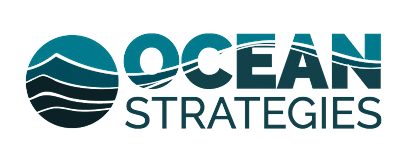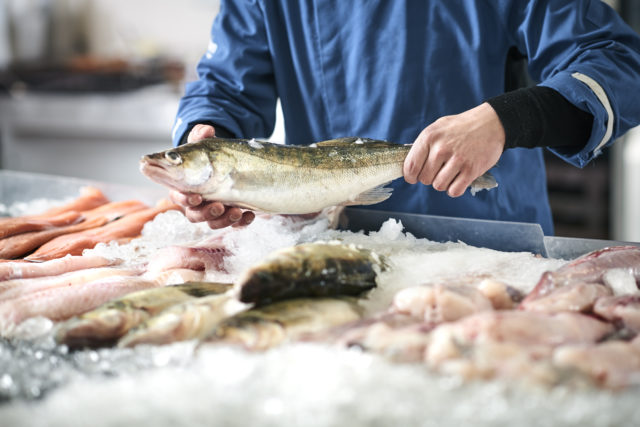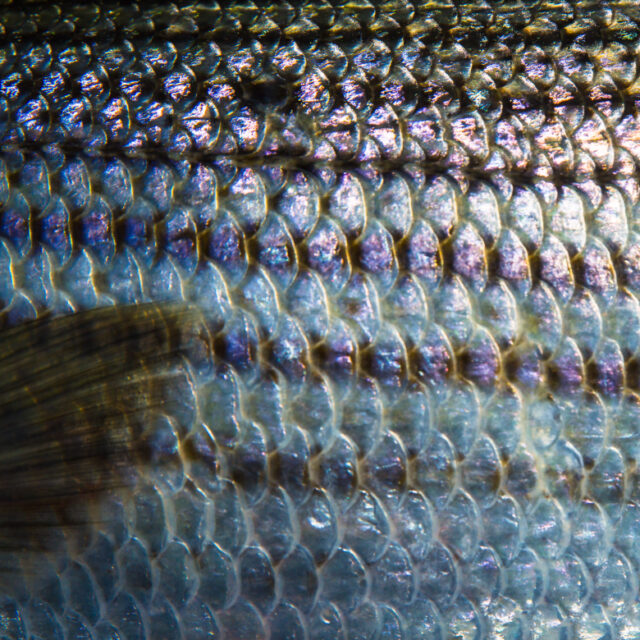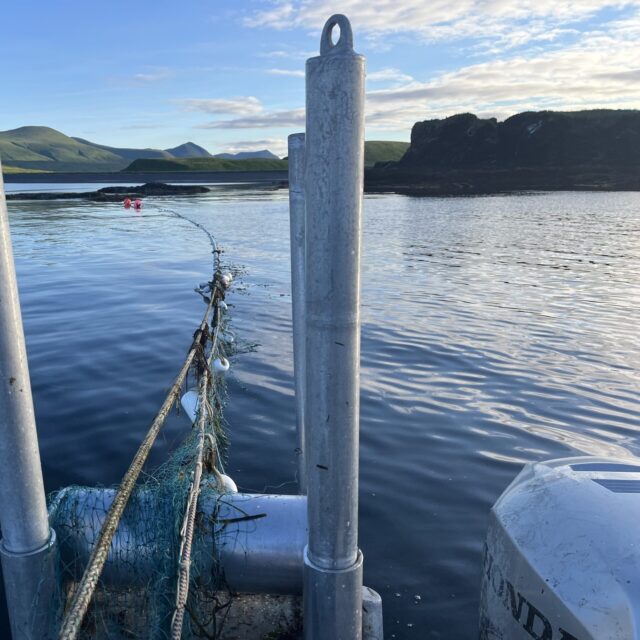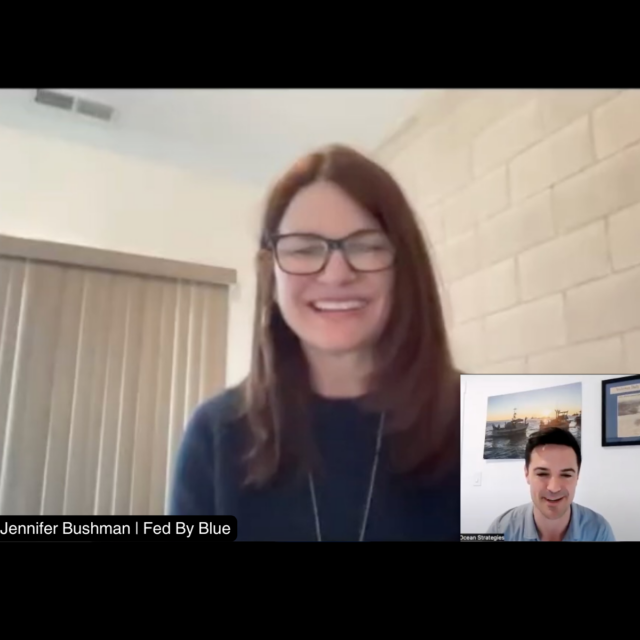DOWNLOAD: WINTER 2021 FISHERIES POLICY REPORT
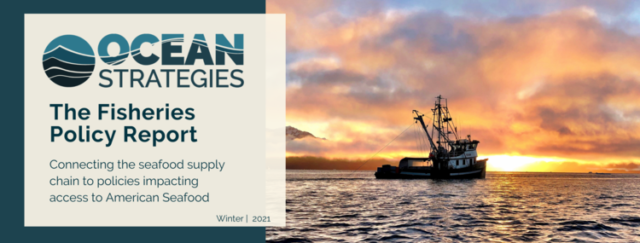
The Ocean Strategies Fisheries Policy Report provides timely policy and industry updates that connect America’s sustainable seafood supply chain — including grocers, restaurants, distributors, transportation and the many other businesses that depend upon seafood access.
Not already signed-up? Receive future updates by signing up.
Presidential Report
Executive Order Increases Ocean Conservation Areas
EO could impact seafood access and supply chain businesses by closing fishing areas
President Biden signed an Executive Order at the end of January that aims to conserve 30% of America’s lands and waters by 2030, looking to tackle climate and habitat concerns. The EO has garnered cautious support from America’s commercial fishermen, who are at the frontlines of the impacts of climate change, but are also concerned about sustaining access to the federal fishing grounds that provide America’s seafood supply.
Specifically, commercial fishermen are concerned about aspects of the EO that create additional and substantial no-take zones in the nation’s federal waters. Seafood retailers and other supply chain businesses are directly affected by any reductions to fisheries access, which they rely upon for a stable supply of key seafood products. The process for implementation and the definitions of no-take zones will be most important to seafood supply chain businesses.
Representatives from the commercial fishing industry are focused on ensuring that definitions, timelines and locations for any potential closures are done through a robust science-based process. Commercial fishing leaders are asking efforts to implement 30×30 be in direct consultation with the regional fishery management councils tasked with managing and conserving fishery resources for the benefit of the nation.
Industry leaders like Seafood Harvesters of America (SHA) — the leading national commercial harvester’s organization — have released statements saying this the best way to achieve important conservation goals while ensuring America’s essential and renewable seafood economy remains intact.
“Much like the Magnuson-Stevens Act, so too must this initiative be rooted in science if it is to be a global gold standard,” said SHA Executive Director Leigh Habegger in a statement. “‘30×30’ must be science-based, transparent, and stakeholder-driven, while having a watchful eye for fairness, equity, and societal betterment. Our oceans are changing rapidly and we must confront that head on. However, we must allow for science to guide us, not politics.”
Historically, efforts to create no-take zones have resulted in the loss of important seafood resources — i.e. marine monuments in New England closing fishing grounds for iconic species like cod and lobster. Additionally, such no-take zones are often closed to commercial harvest but not recreational angling, placing the responsibility and economic consequences of conservation efforts on the seafood supply chain feeding Americans rather than all resources users. The entire seafood supply chain is affected by these combined impacts, and any future closures need to incorporate supply chain stability and food security as key considerations during implementation.
Emerging as one of the bigger points of concern in this particular order is that the parameters of what defines a protected area under this EO are yet to be determined. The scope of possible definitions vary widely, and the final determination could substantially change the size of additional closures, and thus the potential impact to America’s sustainable seafood supply.
Charting a course forward demands robust and meaningful engagement with the industries and management bodies that currently operate in federal fisheries issues — including regional councils, commercial fishermen and the seafood supply chain that relies upon them both.
Stay Informed: Contact Ocean Strategies for additional information, or to subscribe to updates.
Congress
California’s Rep. Huffman releases MSA reauthorization discussion draft after nationwide listening tour
The long-term process to reauthorize the nation’s federal fisheries law — the Magnuson Stevens Act (MSA) — moved another step forward at the end of 2020. Rep. Huffman (D-CA) released a long-awaited discussion draft, and solicited initial feedback through the month of January. Huffman expects to introduce a full reauthorization bill this Congress, providing many important opportunities for seafood supply chain businesses to weigh in as legislation develops.
While updates to this essential law have been forthcoming for some years now, America’s seafood supply chain is currently hard at work meeting the recent rapid growth in American seafood consumption. An updated MSA should take that increased demand into account, and seafood supply chain voices are critical to communicating that priority to Congress.
Average American seafood consumption increased by more than 30% during Covid-19, with some iconic American species like lobster and crab nearly doubling. Ensuring a stable domestic supply of high value species is an integral part of sustaining this economic surge.
Historically, MSA is reauthorized every 10 years and is foundational to America’s commercial fisheries and a complex national to global seafood supply chain. Rep. Huffman conducted a nationwide MSA Listening Tour over the past year, stopping in 8 different regions to gather input from America’s seafood businesses and communities on potential bill updates.
This latest draft takes an at times bold approach to fisheries resilience and improvements, and initial feedback from commercial harvesters has been generally positive. Support for accountability, ecosystem health, fishery resiliency and national marketing are aimed at continuing a successful track record of rebuilding depleted species, while tackling climate change issues and increased demand.
Proposed updates include a focus on the following major elements:
-
Ready fisheries for climate change;
-
Strengthen support for fishing communities;
-
Add a grant program supporting working waterfronts;
-
Resources for national marketing of American seafood;
-
Improve representation and accountability for fishery managers;
-
Enhancing accountability measures including the collection and use of fishery data;
-
Promote healthy fish habitat and forage fish;
-
Reduce bycatch;
-
Rebuild fish stocks.
“With the growing impacts of climate change, difficulties due to the ongoing pandemic, and rapidly evolving needs in fisheries management and science, amending and reauthorizing the MSA remains a top priority,” said Rep. Huffman in a statement released by his office. “We’re looking forward to the next phase of this process and receiving constructive commentary to inform and shape the bill’s introduction (this) year.”
Stay Informed: Ocean Strategies will provide timely updates on opportunities to comment on components of the bill impacting access to and stability of American seafood resources. Subscribe to Policy Updates.
What We’re Watching
Take a swig of coffee. There are more ongoing federal policy items impacting seafood supply chain access.
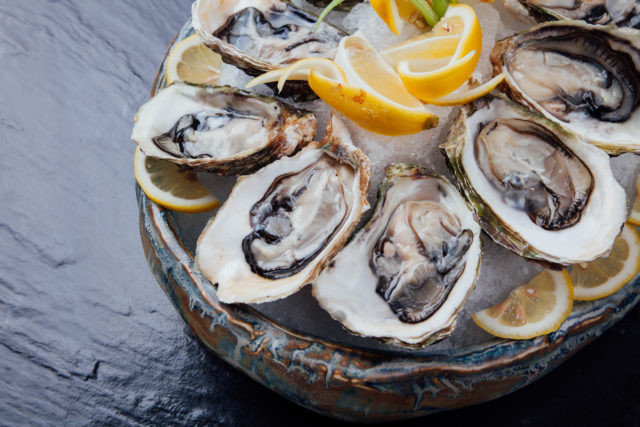
Congress Considers Billions in Covid-19 Restaurant Relief
As America passes the one year mark since the Covid-19 pandemic began, the restaurant industry continues to sustain severe economic impacts. More than 110,000 restaurants have permanently closed since the pandemic began, and more than 2.5 people have lost their jobs. Several developing Congressional actions are aimed at relief for this sector — including a $25 billion restaurant relief package, comprised of grant funds for individual or group restaurants, foodservice businesses and drinking establishments. That relief is focused on payroll, rent, utilities, maintenance, supplies and other essential business expenses. This relief is based on the RESTAURANTS ACT, a bill that was introduced last Congress and supported by the restaurant and commercial fishing industries, that created a $120 billion restaurant revitalization fund. It has yet to be introduced again this Congress.
Covid-19 impacts to restaurants have affected food systems across the country; in particular, the seafood industry continues to experience significantly depressed dock prices even as retail consumption soars. While retail and restaurant seafood are trending in opposite directions in Covid-19, both sectors contribute to seafood demand and are supported by robust harvesting, processing and distribution sectors. Ensuring that American retail can continue to meet growing demand for seafood is in part dependent upon a resilient supply chain base that also relies upon a healthy restaurant economy.
This fall, Ocean Strategies conducted surveys and delivered critical data to NOAA on the economic impacts from Covid-19 to West Coast commercial fishermen and national seafood distributors. You can read more about the impacts of depressed dockside prices and more on our website.
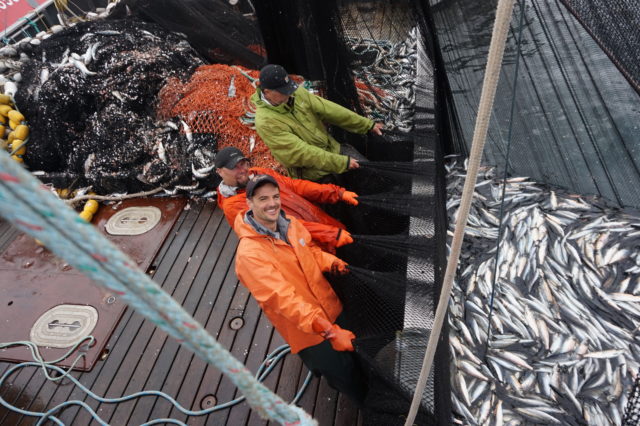
The Call: Protect Bristol Bay
Efforts continue to protect the world’s largest supply of wild sockeye salmon from the proposed Pebble Mine. In the past year, U.S. markets have seen a 20% growth in fresh salmon sales, making domestic supply of this seafood staple even more essential.
Since the Army Corps of Engineers denied the Pebble Limited Partnership’s Clean Water Act permit application in November of 2020, the Bristol Bay Defense Fund released a Call to Protect Bristol Bay from the proposed mine. This message to the Nation’s political leaders urges them to take action to protect the Bristol Bay watershed in perpetuity, and put an end to large-scale mining that would threaten Bristol Bay’s communities, fishermen, and businesses.
The call to action outlines a two-step request: 1) Ask the EPA to use its authority under section 404(c) of the Clean Water Act to veto the Pebble Mine. Several federal agencies have determined that the Pebble project will cause irreversible damage to the Bristol Bay watershed and it’s time to act on that science. 2) Ask Congress to introduce and pass legislation to create the Jay and Bella Hammond National Fisheries Area to ban any future large scale projects that would harm Bristol Bay’s rivers, lakes, and wetlands. Industry coalition Businesses for Bristol Bay — which includes national grocery chains and Fortune 500 companies — have joined this call to action.
“Bristol Bay is a renewable economic engine that sustains thousands of businesses throughout the country. It is in our country’s best interest to permanently protect Bristol Bay and ensure that it will continue to provide jobs, revenue, recreation opportunities, and sustainable, wild seafood. As businesses that value and depend on Bristol Bay’s pristine waters, we stand with the people of Bristol Bay and ask our elected leaders to permanently protect Bristol Bay from large-scale mining.” — Businesses for Bristol Bay
Sign on to the Call to Protect Bristol Bay through Businesses for Bristol Bay here.
Aligning Seafood Businesses in 2021 — From COVID-19 to Fisheries Legislation
Editorial: Featured in Progressive Grocer By Hannah Heimbuch, Ocean Strategies, Inc.
On the best of days, moving seafood from ocean to plate is no simple task. In 2020, it was extraordinary.
COVID-19 required sweeping changes from fishing vessel to grocery counter, demanding unprecedented cooperation and diligence in order to keep our seafood systems safe and functioning.
As an Alaskan commercial fisherman working in remote parts of the North Pacific, I can attest first-hand to the industry’s substantial efforts to protect communities and workers. Processors, distributors and grocers around the country rose to the same challenge. The result? While some seafood businesses are weathering major financial and logistical hardships, harvesters continue to bring their catch to market, and in U.S. grocery stores, fresh and frozen seafood sales are up 25-30% as consumers adapt new at-home cooking habits.
COVID-19 has highlighted what has always been true for the seafood supply chain: Access to sustainable, reliable product depends upon trusted partnerships.
Most recently, Alaska’s Governor Mike Dunleavy applauded efforts led by United Fishermen of Alaska and regional processors to coordinate COVID-19 safety in some of the world’s most remote fisheries. Seafood Harvesters of America joined the Independent Restaurant Coalition to support relief for both sectors’ emergent needs. Whether we’re expanding business, addressing emergencies or developing long-term policy, we’re more effective working together.
The year ahead offers ample opportunity to expand collaborations with retailers. While the fishing grounds seem far from the seafood counter, fisheries and oceans policy are the direct link for retail access to seafood. Here’s what we’re watching:
Read more at Progressive Grocer
Industry Logbook
Q & A with Linda Behken
Ocean Strategies called Linda Behnken — commercial fisherman and 30-year Executive Director of the Alaska Longline Fishermen’s Association — to get her take on climate legislation and its impacts to community fisheries.
Linda was recently awarded the Heinz Foundation Award for the Environment, has been a North Pacific Council member and Commissioner for the International Pacific Halibut Commission, and in 2016 was recognized as a White House Champion of Change for Sustainable Seafood by President Obama.
Q: Let’s start with the most important questions: what’s your favorite fish to catch and your favorite fish to eat?
A: Well! My favorite fish to catch is king salmon. Trolling for kings is hugely fun — when you play each fish in by hand you can feel the energy of that fish through the line. It’s the absolute best way to harvest such an incredible fish, by landing it carefully.
My favorite fish to cook is sablefish (black cod). A lot of fish are sensitive, or easy to overcook. Sablefish is more forgiving, and while there are many ways to cook it, it’s mostly about the amazing flavor.
Q: Tell us a bit about ALFA and the species your members target and the fishing methods they use. What are the markets for these species? Who are they being sold to?
A: ALFA has about 200 members from 18 different Alaska fishing communities. The main species our fishermen harvest are halibut, rockfish, sablefish, and salmon. Fishing methods are mostly hook and line, but fishermen participating in summer salmon fisheries gillnet and seine, and some of our sablefish fishermen have switched to pots to avoid whale depredation.
As far as markets, halibut is domestically marketed once it leaves Sitka; a lot goes into restaurants and retail. Sablefish goes to the Asian market but there is growing demand in the US. Salmon goes everywhere — king salmon to the US, and coho and chum salmon go overseas to various markets like Norway and Asia.
ALFA also runs a community supported fisheries (CSF) program. We ship seafood each month to subscribers in Sitka, Juneau, Anchorage, Fairbanks, and Seattle, and we also direct ship custom boxes to Alaskans and residents of the Lower 48. Alaskans Own Seafood is sustainably harvested and locally processed premium seafood caught by our fishing families and delivered direct to consumers.
Q: What are you most optimistic about and what are you most concerned about in terms of policies that impact seafood in the Biden administration?
A: We’re optimistic that this administration recognizes seafood is food, and that sustainable seafood is part of local food security and climate solutions. There is emphasis on growing a blue-green economy based on social justice, careful stewardship of renewable resources, sustainable harvest—on land or from the ocean.
One of the concerns of the 30×30 initiative is that walling off sections of the ocean to all commercial extractive uses —- commercial fishing included —- is actually counter to the Biden administration’s focus on supporting sustainable local economies through rural, social, and indigenous engagement. We should leverage the fact that fishing is a sustainable industry. You only have access to this fish if you’re allowed to go fishing. It is a giant step backwards on a lot of counts if fishing communities lose access to sustainable fisheries.
ALFA cosigned letters with other members of the fishing industry and the American Sustainable Business Council about promoting sustainable industries within the 30×30 legislation. The pushback from industry groups like this lead to a change in legislative language for the better. This is a great example of how the fishing community can work together with other sustainable business sectors and it showcases the need for the seafood supply chain to be more active with legislation that affects the availability of seafood, such as the 30×30 initiative.
Q: People are now cooking much more fish at home, so we know retail demand for seafood is up in the US. But how has Covid-19 impacted dockside prices, fishing ability, and demand for halibut, sablefish, and salmon — species predominantly harvested by ALFA members?
A: Due to the pandemic, prices have dropped by roughly 40-60% depending on species. This is largely due to restaurant closures.
Q: Do you see CSF in competition with primary retail, or complementary to an increasingly dynamic marketplace?
A: We don’t see ourselves as competing. There is so much room for growth and education in the sustainable seafood market and consuming sectors. Most people understand that seafood is healthy and that they should eat more, but there is an uneasiness around purchasing and cooking it; people are unsure if they will cook it right, if it will keep well, and what to do with leftovers. We need to make people more comfortable— give background information to people about sustainably sourced seafood. Promote seafood as healthy for the planet and for our bodies. Seafood has one of the lowest carbon footprints of all domestic protein sources, for example, yet over 80 percent of the seafood consumed in the US is imported. If we can get more people to consume domestically harvested seafood then that is a win-win for everybody.
Know your fishermen, know your source, and look for domestic seafood.
Q: Where else can the seafood supply chain be working together effectively on policy? Where are the needs and opportunities?
A: It’s important for us to get behind a working fisheries management system that’s buffered against climate change, adequately fund stock assessments, and take care of fish habitat in the ocean, rivers, and watersheds.
Fisheries management must be done in a way that is science-based, socially just, and builds on the existing success of the US fisheries management process. Let’s think big picture: build durable solutions based on good science and a good public process.
Read more in Linda Behnken’s latest The Hill opinion piece Setting Biden’s seafood policy table, co-authored with Mike Conroy, Executive Director of the Pacific Coast Federation of Fishermen’s Associations.
